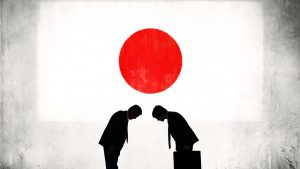
How did origami contribute to the Industrial Revolution in Japan?
Japan’s transformation into a strong world power began in the mid-19th century, in 1868. At that point, Mutsuhito became emperor, and the period of his reign was called Meiji. Land reform was a key aspect of how Japan’s industrial revolution began.
Land reform in Japan
Before the coming to the reign of Mutsuhito Emperor there was the right of feudal lords to land. Peasants could only rent land. Moreover, the inheritance transfer was not included in this lease. Nevertheless, the peasants had no right to sell their land. Peasants had to give the feudal lords a large part of their crops for the opportunity to work on their own lands. In the old days, it was only half, and between the 17th and 19th centuries, that number rose to 70% of the harvest.
As a result, the peasants did all the work, took risks, invested funds, but the lords took most of the profit. Mutsuhito the emperor realised that this was not allowed, and he supported the wealthy peasants. Thus he changed the tax collection systems and allowed them to sell their lands. Though the new system was not perfect. The tax was levied in cash equivalent to the value of the land. However, this has laid the foundation for further change.
Industrial coup in Japan start
The Industrial Revolution itself occurred in the 1980s, which was a turning point for the capitalist system. It was in 1880 that the law on the possibility of transferring state factories and enterprises into private hands became effective. Moreover, the sale took place at prices that did not exceed 50% of the capital stock. Often, the cost was even less. There was also the ability to pay for the purchase in instalments for buyers.

Thus the railway companies did not pay tax for the first 15 years after their establishment. This helped them channel their profits into the modernization and development of the railway business. As a result, the length of railways exceeded two thousand kilometres in the early 1990s, and soon it was even 5000 km. In 1884, Japan was no longer considered one of the most technologically underdeveloped countries. There, the telegraph appeared. Five years later, this country had telephone lines throughout the territory. After 1868, the volume of imported goods increased 12 times, and the volume of exported goods increased 7 times.
Japan’s secret
Despite its first successes, Japan still focused on agriculture as a core business. To remedy this, the government has actively intervened in the regulation of the economy, as well as directed its rails to the development of the military-industrial complex. As a result, it helped Japan set up many high-tech plants, released a mass of advanced technology, and attacked China in 1894. The Japanese won the war and gained a new market. Accordingly, it was another catalyst for the development of its industry.
Japan did not stop there and attacked Russia in 1905. This war was hard, but Japan was ill-prepared for it because it lacked the resources to sustain a protracted Russian standoff. This is the reason why it was forced to enter into peace talks, which Russia accepted because it also had a low level of development. However, even a loss helped Japan to gain the domestic momentum that this state has brought to today’s industrial level.
It wasn’t that difficult in those complicated circumstances. The fact is that every Japanese is the successor of the culture of this country since childhood, which pays great attention to the development of every person. In Japan, each occupation is a meditation in action that helps the Japanese retain the ability to think creatively until old age. The art of making paper figurines called origami is one of such occupations. The Japanese have achieved a high level of mastery in the art of origami, which helps them collect beautiful little pieces of paper sculpture. However, origami originated in China, but only the Japanese were able to make it a true art.


